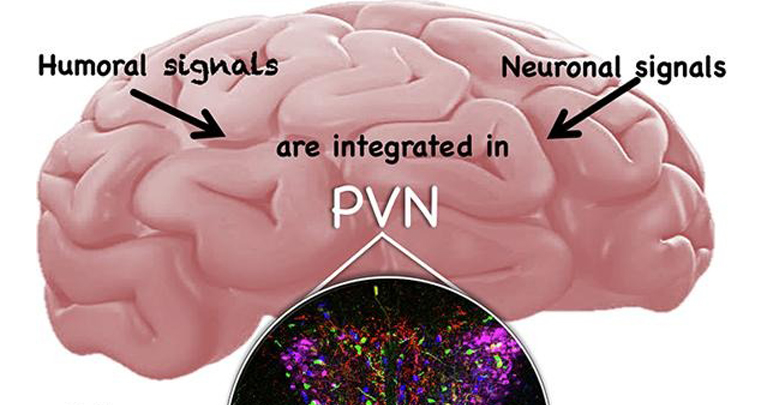
Frontiers in Neuroendocrinology , April 2022
The hypothalamic paraventricular nucleus as a central hub for the estrogenic modulation of neuroendocrine function and behavior
D. Grassi a , M. Marraudino b , L.M.Garcia-Segura c , G.C.Panzica b,d
Estradiol and hypothalamic paraventricular nucleus (PVN) help coordinate reproduction with body physiology, growth and metabolism. PVN integrates hormonal and neural signals originating in the periphery, generating an output mediated both by its long-distance neuronal projections, and by a variety of neurohormones produced by its magnocellular and parvocellular neurosecretory cells.
Here we review the cyto-and chemo-architecture, the connectivity and function of PVN and the sex-specific regulation exerted by estradiol on PVN neurons and on the expression of neurotransmitters, neuromodulators, neuropeptides and neurohormones in PVN. Classical and non-classical estrogen receptors (ERs) are expressed in neuronal afferents to PVN and in specific PVN interneurons, projecting neurons, neurosecretory neurons and glial cells that are involved in the input–output integration and coordination of neurohormonal signals.
Indeed, PVN ERs are known to modulate body homeostatic processes such as autonomic functions, stress response, reproduction, and metabolic control. Finally, the functional implications of the estrogenic modulation of the PVN for body homeostasis are discussed.
free download until March 1, 2022
a
Department of Anatomy, Histology and Neuroscience, Universidad Autonoma de Madrid, Madrid, Spain
b
Neuroscience Institute Cavalieri Ottolenghi (NICO), Orbassano, Torino, Italy
c
Instituto Cajal, Consejo Superior de Investigaciones Científicas, Madrid, Spain
d
Department of Neuroscience Rita Levi Montalcini, University of Torino, Torino, Italy







